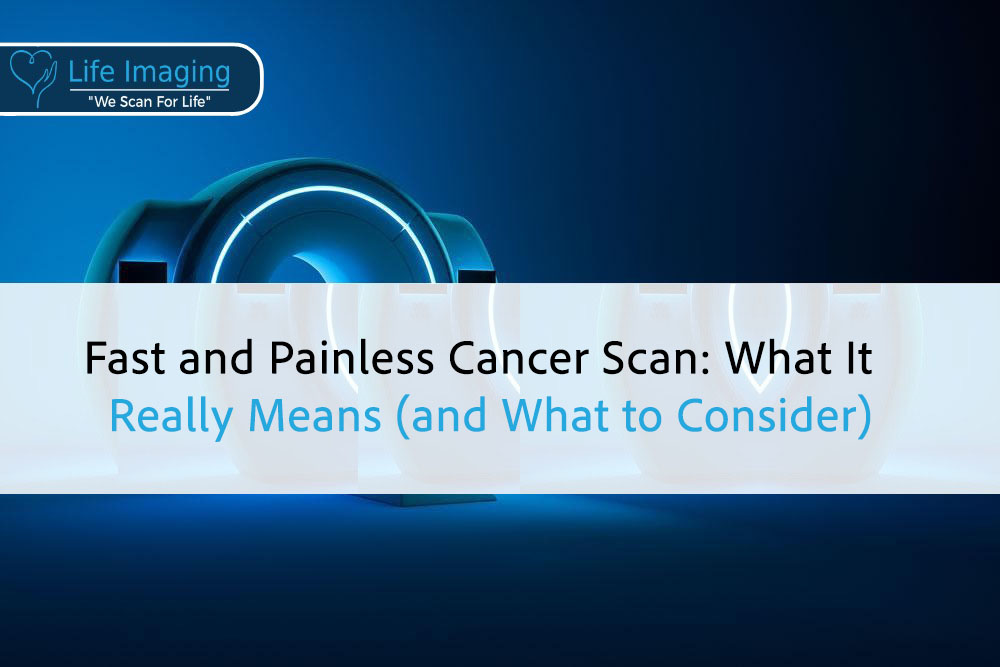
Fast and Painless Cancer Scan: What It Really Means (and What to Consider)
Fast and Painless Cancer Scan: What It Really Means (and
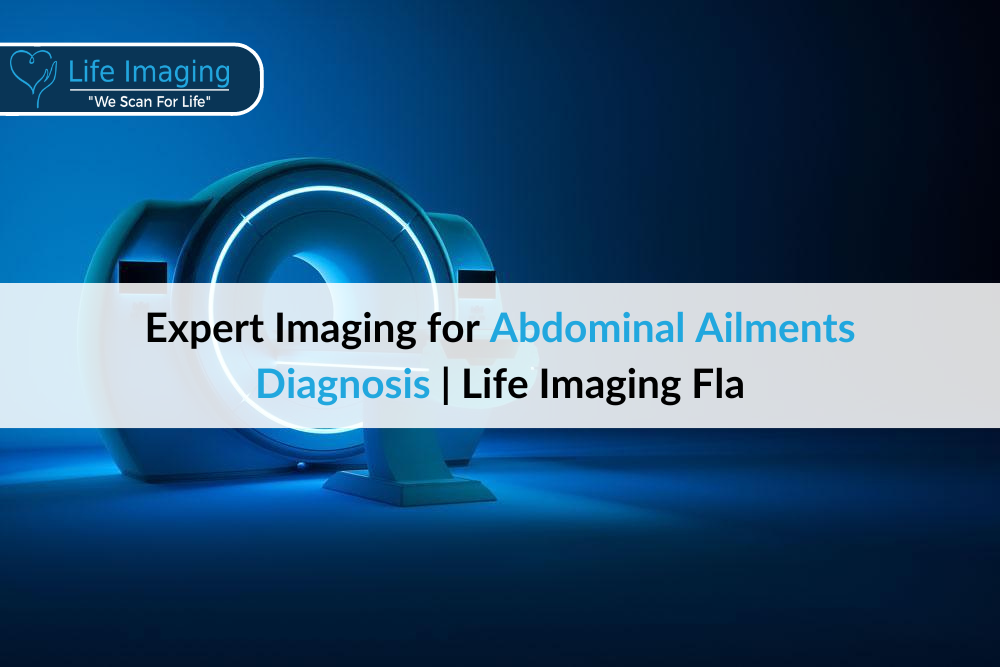
Abdominal ailments can range from mild discomfort to severe, life-threatening conditions, making early and accurate diagnosis crucial for effective treatment. At Life Imaging Fla, we specialize in utilizing advanced imaging technologies to explore the complexities of the abdomen, helping in the early detection of a wide array of abdominal issues, including heart disease and cancer. Our commitment to using the most advanced imaging techniques ensures that our patients receive precise diagnoses, facilitating timely and tailored treatment options.
The benefits of adept imaging are manifold. It not only aids in diagnosing the cause of symptoms accurately but also assists in monitoring the progression of a known disease, evaluating the effectiveness of ongoing treatment, and guiding medical procedures accurately. Techniques such as CT scans, MRI, ultrasound, and X-rays are integral tools in our diagnostic arsenal at Life Imaging Fla. Each imaging modality offers distinct advantages and, in some cases, can be combined to enhance diagnostic accuracy.
Let’s delve into how each imaging technique works, their specific applications in diagnosing different abdominal ailments, and how our team leverages these technologies to improve patient outcomes. The focus will be on providing you with comprehensive insights into the crucial role imaging plays in diagnosing and managing abdominal health issues, reinforcing the importance of advanced medical technology in contemporary healthcare.
Abdominal imaging is a specialized area of medical imaging that provides a visual representation of the structures and organs within the abdomen. Such imaging is crucial as it helps diagnose causes of pain, monitor disease progression, and guide therapeutic interventions.
Ultrasound imaging, also known as sonography, uses high-frequency sound waves to create images of organs within the abdomen. This method is widely used due to its non-invasiveness and absence of radiation. It is particularly effective for examining soft tissues and fluid-filled structures, making it a go-to option for evaluating organs such as the liver, kidneys, pancreas, and gallbladder. Moreover, ultrasound can help detect fluid in abdominal cavities, enlarged organs, and growths such as tumors.
One of the most significant advantages of ultrasound is its ability to provide real-time imaging. This capability allows healthcare providers to observe the movement of internal organs and blood flow through various vessels, facilitating more comprehensive diagnostics without discomfort to the patient.
Computed Tomography (CT) scans are another vital tool in abdominal imaging. They use a combination of X-rays and computer technology to create detailed cross-sectional images—or slices—of the abdomen. CT scans are particularly useful when more detailed images are necessary for diagnosis. They excel in identifying different types of abnormalities, including tumors, infections, or injuries within the abdomen.
Unlike ultrasound, CT scans can provide high-resolution images of both soft tissues and bone structures, which is critical for comprehensive diagnostics. For example, a CT scan can quickly spot a small liver lesion or differentiate between benign and malignant masses, directing the treatment plan accordingly.
Magnetic Resonance Imaging (MRI) of the abdomen is highly beneficial for its superior contrast resolution, which helps distinguish between different types of soft tissues. This imaging technique uses powerful magnets and radio waves, without the need for radiation. MRI is particularly effective in assessing complex cases of liver diseases, identifying soft tissue tumors, and visualizing vascular abnormalities.
Not to mention, MRI is instrumental in staging cancer by providing exact information about tumor size, location, and involvement with neighboring structures. This precision helps in planning surgeries or other targeted therapies, ensuring high accuracy in treatment applications.
Positron Emission Tomography (PET) scans are used less frequently for abdominal imaging but are highly effective in certain contexts, such as cancer assessment. PET scans can detect the metabolic activities of cells. Since cancer cells have higher metabolic rates than normal cells, PET scans are valuable for detecting cancerous growths and checking whether cancer has spread to other parts of the body.
A PET scan is often combined with a CT scan (PET-CT) to provide comprehensive details about both the anatomy and the function of abdominal organs, offering essential insights into the patient’s condition and the most effective treatment methods.
In many cases, combining different imaging techniques can provide more comprehensive diagnostics. For instance, while a CT scan might reveal the presence and size of a liver tumor, an MRI could further elucidate its structural relationship with blood vessels and surrounding tissues, crucial for surgical planning.
At Life Imaging Fla, our expert team of radiologists and technicians are skilled in determining the most appropriate imaging exams based on individual patient symptoms and medical histories. This personalized approach ensures that diagnostics are not only accurate but also as efficient and safe as possible.
When a patient arrives with severe abdominal pain, imaging techniques can be lifesaving. Emergencies such as appendicitis, bowel obstruction, or a ruptured abdominal aortic aneurysm necessitate rapid and accurate diagnosis.
CT scans are often the first test done in emergencies because they provide quick, clear images. These scans can show doctors blockages, infections, and other problems that could be life-threatening. For instance, a CT scan can quickly tell if a patient’s appendix is inflamed and needs to be removed.
For pregnant women or patients with gynecological concerns, an ultrasound is safer because it doesn’t use radiation. It can reveal problems like ectopic pregnancies or ovarian cysts without harm to the patient.
Chronic conditions such as inflammatory bowel disease (IBD) and liver cirrhosis require ongoing imaging to check how the disease is doing and how well the treatment is working.
An MRI can show the inflammation and thickening of bowel walls associated with IBD, details that are less visible on a CT scan. This level of detail lets doctors adjust treatments as the condition changes.
Patients with chronic liver diseases may undergo regular ultrasounds to monitor changes in liver texture, detect cirrhosis, and screen for liver cancer—a common complication of cirrhosis.
Imaging is crucial in both detecting unsuspected cancers and staging known cases, where it helps determine the extent of disease spread.
A PET-CT scan is very effective in spotting where a cancer has spread since they show both the structure of organs and metabolic activity. This method is especially important for cancers that tend to spread widely, like stomach cancer.
High-resolution CT scans can track even small changes in tumor size, helping oncologists understand if the treatment is working. For instance, these scans can measure the size of liver spots before and after chemotherapy to see if the drug is effective.
For individuals at high risk of abdominal diseases, like those with a family history of colon cancer or heavy smokers at risk for kidney cancer, preventive imaging can lead to early detection and better outcomes.
In the case of smokers, a low-dose CT scan can find early signs of lung cancer, when it’s most treatable. This proactive measure is recommended for current or former heavy smokers.
Regular colonoscopies, which involve using a camera to look inside the colon, can not only detect colon cancer at its earliest stages but also find and remove polyps before they turn into cancer.
At Life Imaging Fla, we offer customized imaging plans based on each patient’s medical history, family history, and specific risk factors. Our goal is to use imaging not only to diagnose and treat but also to prevent.
An individual’s health history might point to the need for specific imaging tests. For example, a patient with recurrent kidney stones may benefit from periodic kidney ultrasounds.
For patients with genetic conditions that increase cancer risk, like Lynch syndrome for colon cancer, more frequent and intensive imaging schedules can be life-saving. Regular MRI scans might be advised to catch tumors early.
We prioritize not just diagnostic accuracy but also patient safety and comfort.
While many scans are enhanced by contrast dyes that improve clarity, we meticulously screen patients for allergies and kidney health to prevent complications. Options for non-iodine-based contrasts are available for those with sensitivities.
Understanding that some patients may feel claustrophobic during an MRI, we offer open MRI options and work with patients to help them feel secure and comfortable throughout the procedure.
Gallstones and other gallbladder-related issues are often detected through ultrasound. This technique is preferred because it is quick, non-invasive, and doesn’t involve radiation. It allows doctors to assess the gallbladder for stones, inflammation, and other abnormalities.
For disorders such as diverticulitis or intestinal blockages, a CT scan is typically used. This imaging method provides a detailed image of the bowel, helping identify inflamed or obstructed areas, which guides the treatment approach—whether it’s medication or, in more severe cases, surgery.
When conditions like ulcers, Crohn’s disease, or colon cancer are suspected, an endoscopic procedure may be recommended. This involves inserting a thin, flexible tube with a camera into the gastrointestinal tract. It helps visualize the inner lining of the colon and intestine directly, allowing for biopsy or the removal of tissue samples for further analysis.
The liver, a vital organ, can be affected by a variety of conditions, including hepatitis, fatty liver disease, and liver cancer. Regular imaging assessments help monitor these conditions effectively.
MRI is often used to provide a detailed image of liver tissue. This helps in identifying liver tumors, checking the extent of liver damage from hepatitis or alcohol use, and evaluating the effectiveness of treatment plans.
Regular ultrasounds can help detect changes in liver texture, determine the presence of tumors, and help in staging liver fibrosis. This is especially important for patients at risk of liver conditions, such as those with chronic hepatitis B or C.
The pancreas is a small, yet crucial organ that can develop serious health issues like pancreatitis or pancreatic cancer. Pinpointing problems in the pancreas can be challenging due to its deep location in the abdomen.
While an MRI provides detailed images of the pancreas, Magnetic Resonance Cholangiopancreatography (MRCP) is a specialized MRI technique that focuses on the pancreatic ducts and bile ducts. MRCP is crucial for identifying blockages or abnormalities in these ducts that could indicate underlying disorders.
Combining endoscopy with ultrasound, this technique allows for highly detailed images of the pancreas. It is particularly useful for assessing pancreatic cysts and taking biopsies of suspicious areas without needing more invasive procedures.
Kidney health is another critical area where imaging is indispensable, particularly for detecting kidney stones, tumors, or signs of chronic kidney disease.
CT scans provide a very clear picture of the kidneys, helping to spot stones, structural issues, or tumors. They can help determine the size of kidney stones and guide decisions about the best treatment approach, such as medication, shock wave therapy, or surgery.
For ongoing monitoring of kidney conditions, ultrasounds are used frequently as they do not involve radiation and are relatively simple to perform. They are particularly useful for tracking the progression of chronic kidney disease or the response to treatment for kidney tumors.
Vascular health within the abdomen is critical. Conditions like aneurysms or blockages in the abdominal aorta or other major blood vessels can be life-threatening if not detected and treated promptly.
CT angiography involves using a CT scan along with a contrast dye to visualize blood flow in abdominal arteries. This method is essential for detecting aneurysms or blockages, helping to prevent potentially catastrophic outcomes like a ruptured aneurysm.
Due to its safety and convenience, ultrasound is often used for initial evaluations of the abdominal aorta, especially to screen for an enlargement that could indicate an aneurysm.
The role of imaging in diagnosing and managing abdominal ailments cannot be overstated. At Life Imaging Fla, we are committed to harnessing the power of advanced imaging technologies to enhance the accuracy and efficiency of medical diagnoses. Our comprehensive range of imaging services caters to a wide spectrum of abdominal health issues, from emergencies and chronic diseases to preventive screenings and thorough assessments.
By integrating state-of-the-art equipment with expert medical insight, we ensure that each patient receives personalized care tailored to their specific needs. Our focus on innovative imaging solutions not only aids in early detection and precise diagnostics but also significantly helps in shaping effective treatment strategies. This proactive approach to healthcare facilitates improved patient outcomes and enriches the overall quality of life.
Take the first step towards better health today. Whether you are facing a medical concern or simply committed to maintaining your well-being, Life Imaging Fla is here to provide you with the best diagnostic care in Orlando, FL. Contact us to learn more about our services or to schedule your imaging appointment. Let us be your partner in navigating the path to optimal health and wellness!

Fast and Painless Cancer Scan: What It Really Means (and
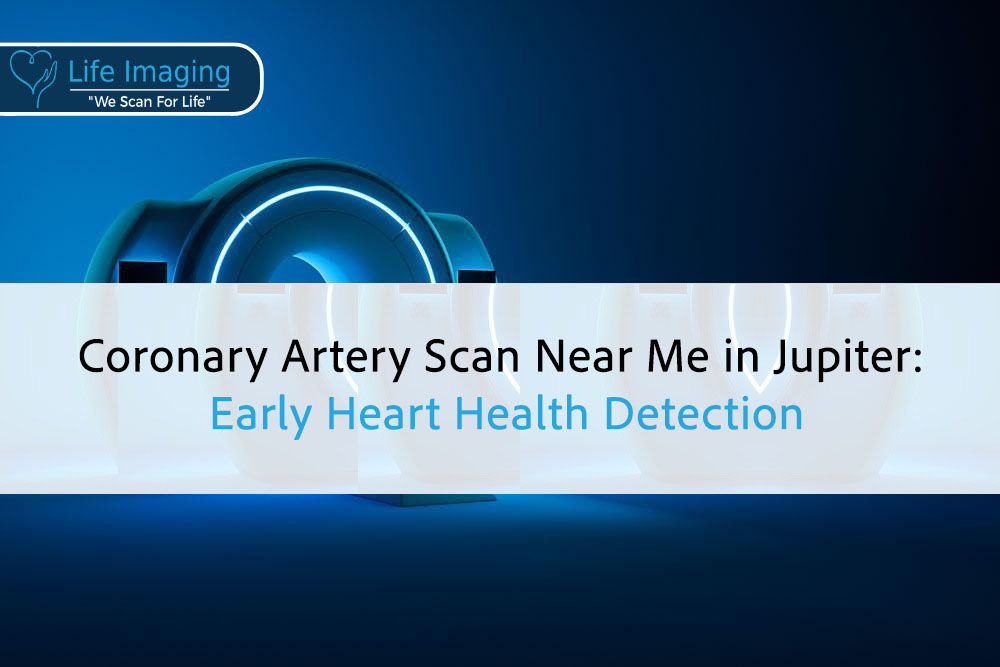
Introduction Your heart works hard every second of the day,
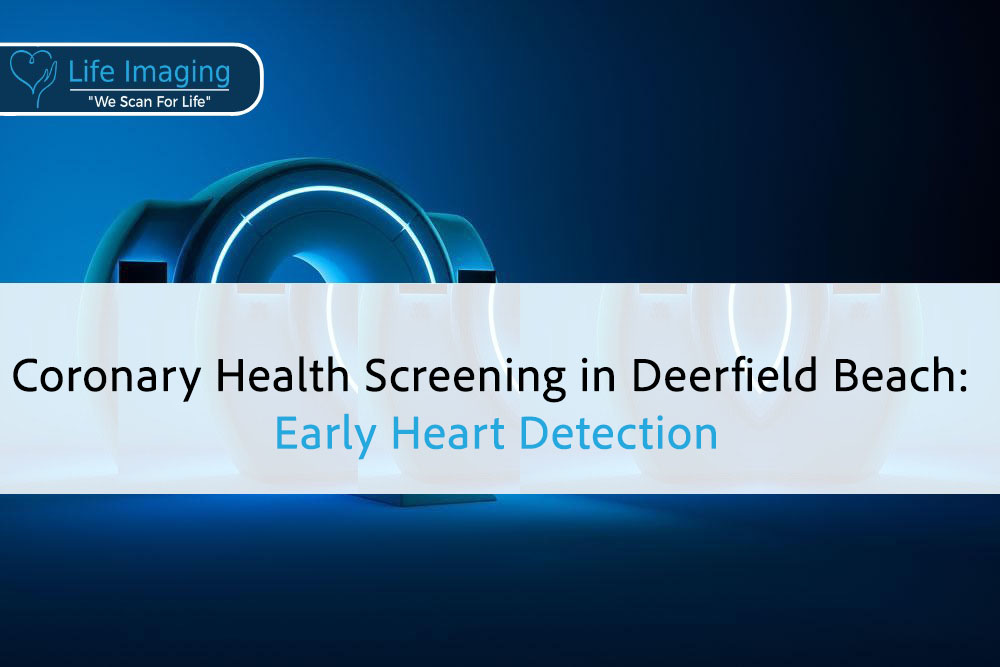
Introduction Your heart works around the clock, but changes inside
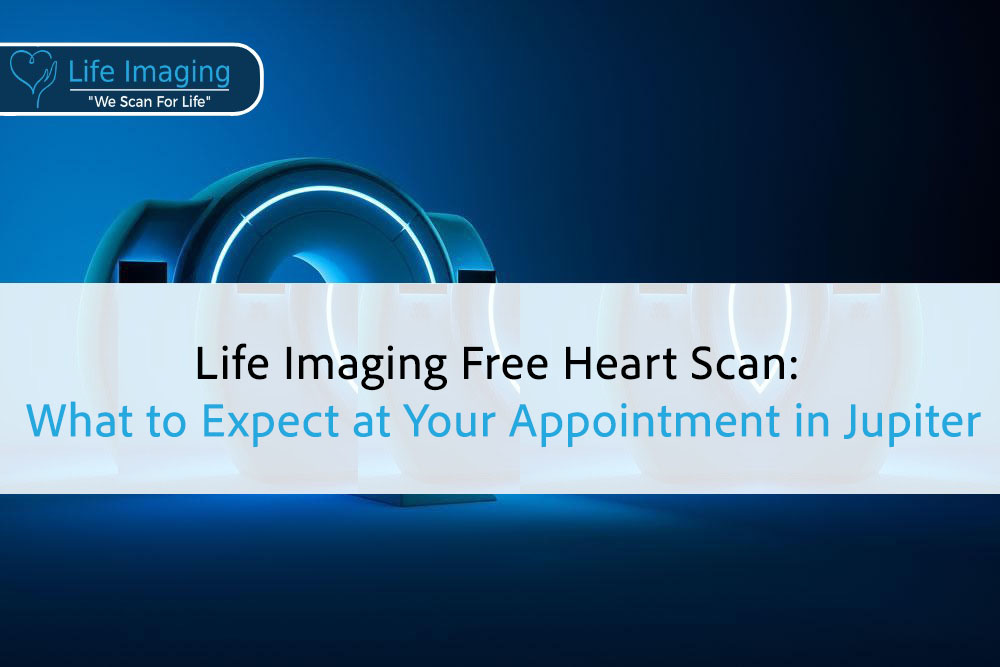
Introduction Your heart works nonstop, often without a single complaint.
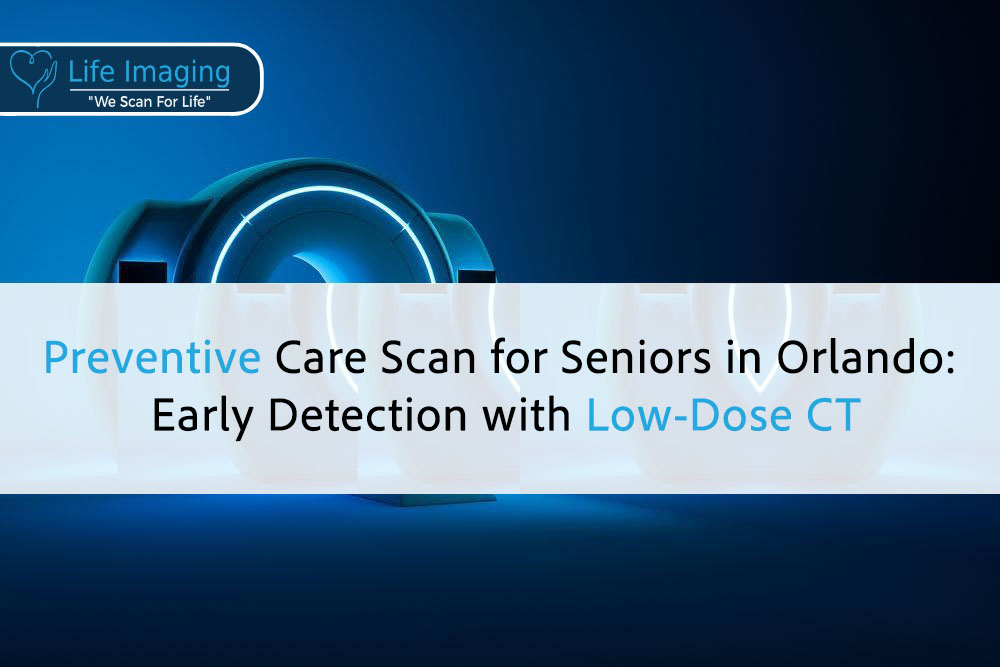
Introduction The best part of getting older is having time
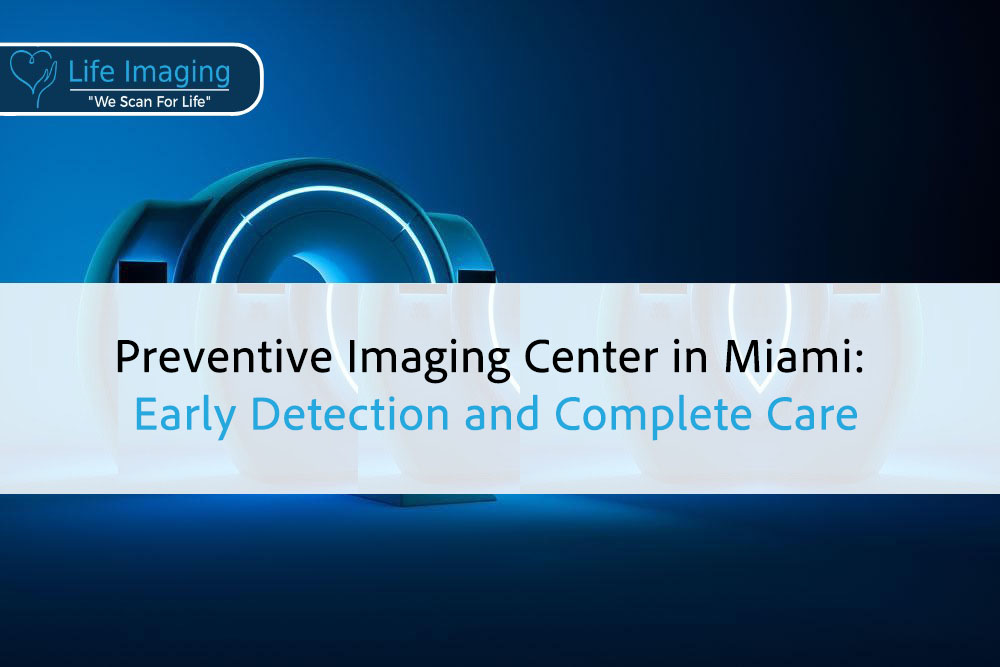
Introduction Good health isn’t just about treating problems, it’s about

* Get your free heart scan by confirming a few minimum requirements.
Our team will verify that you qualify before your scan is booked.
Copyright © 2025 Life Imaging – All Rights Reserved